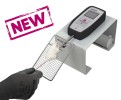Authors
Majumder A, Singh M, Behera J, Theilen NT, George AK, Tyagi N, Metreveli N, Tyagi SC.
Lab
Biochemistry and Molecular Genetics, University of Louisville, United States.
Journal
American Journal of Physiology Cell Physiology
Abstract
Although hyperhomocysteinemia (HHcy) occurs due to the deficiency in cystathionine-_-synthase (CBS) causing skeletal muscle dysfunction, it is still unclear whether this effect is mediated through oxidative/endoplasmic reticulum (ER)-stress or both. Nevertheless, there is no treatment option available to improve HHcy-mediated muscle injury. Hydrogen sulfide (H2S) is an anti-oxidant compound and patients with CBS mutation do not produce H2S. In this study, we hypothesized that H2S mitigates HHcy-induced redox imbalance/ER-stress during skeletal muscle atrophy via JNK-phosphorylation. We used CBS+/- mice to study HHcy-mediated muscle atrophy and treated them with sodium hydrogen sulfide (NaHS, an H2S donor). Proteins and mRNAs were examined by Western blots and qPCR. Pro-inflammatory cytokines were also measured. Muscle mass and strength were studied via fatigue-susceptibility test. Our data revealed that HHcy was detrimental to skeletal mass, particularly gastrocnemius and quadriceps muscles weights. We noticed that oxidative-stress were reversed by NaHS in Hcy-treated C2C12 cells. Interestingly, ER-stress markers (GRP78, ATF6, pIRE1_, and pJNK) were elevated in-vivo and in-vitro, and NaHS mitigated these effects. Additionally, we observed that JNK-phosphorylation was upregulated in C2C12 after Hcy treatment, but NaHS could not reduce this effect. Furthermore, inflammatory cytokines IL-6 and TNF-_ were higher in plasma from CBS+/- as compared to wild-type mice. FOXO1-mediated Atrogin-1 and MuRF-1 upregulation were attenuated by NaHS. Functional studies revealed that NaHS administration improved muscle fatigability in CBS+/- mice. In conclusion, our work provides evidence that NaHS is beneficial in mitigating HHcy-mediated skeletal injury incited by oxidative/ER-stress responses.
BIOSEB Instruments Used:
Grip strength test (BIO-GS3)

 Pain - Thermal Allodynia / Hyperalgesia
Pain - Thermal Allodynia / Hyperalgesia Pain - Spontaneous Pain - Postural Deficit
Pain - Spontaneous Pain - Postural Deficit Pain - Mechanical Allodynia / Hyperalgesia
Pain - Mechanical Allodynia / Hyperalgesia Learning/Memory - Attention - Addiction
Learning/Memory - Attention - Addiction Physiology & Respiratory Research
Physiology & Respiratory Research
 Pain
Pain Metabolism
Metabolism Motor control
Motor control Neurodegeneration
Neurodegeneration Cross-disciplinary subjects
Cross-disciplinary subjects Muscular system
Muscular system General activity
General activity Mood Disorders
Mood Disorders Other disorders
Other disorders Joints
Joints Central Nervous System (CNS)
Central Nervous System (CNS) Sensory system
Sensory system
